As the pinnacle of single seater racing in the USA, IndyCar has long history to look back upon. But it never holds back from making bold decisions. The current Dallara IR-18 Indycar features unique technology to compliment an underlying solid single seater design.
Background/history
2018 DW12 spec updated, fixed chassis, two aero specs (road course and oval), two engines (Honda and Chevrolet). Limited scope for teams to modify, rather focus on set up of the car.
IndyCar has developed from racers initially taking part with bespoke car designs, to progression through the 70s and 80s with the teams running chassis bought in from specialist race car manufacturers and engines largely from Cosworth. The concept of prototype race cars in the series continued until the split of the category in 1995, which lead towards spec cars being raced. After the reformation of the series in 2008, rules progressed towards the current era with a spec Dallara chassis. Updated for 2019, the current Indycar uses the same 2012 Dallara chassis, mated to either a Honda or Chevrolet engine and Xtrac gearbox. This, being wrapped in a series of spec designed body kits, looks good as well as perform on track.
Chassis Layout
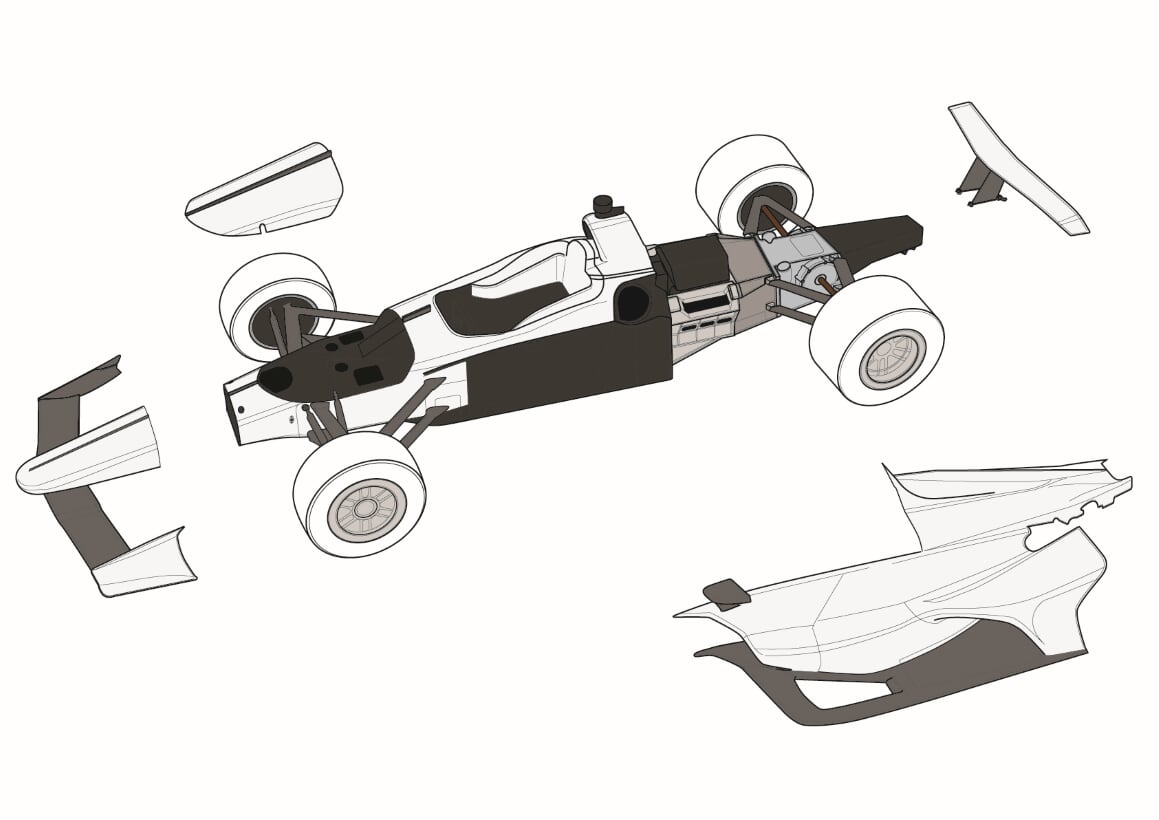
In terms of layout, IndyCars are much like any single seat race car. Central to the car is the monocoque housing the driver and the fuel tank. Everything else is then bolted to this including the nosecone, front suspension, radiators and engine. With the engine acting as a stressed member the gearbox, rear suspension and rear crash structure bolt directly on to it to complete the car.
As this is a spec car, the dimensions and specifications are also fixed, so the wheelbase depending on the car’s configuration is 298cm-308cm, while the width is 194cm. The total length is fixed at 510cm, due to the long crash structures, essential for racing at +200mph. It’s smaller in contrast to an F1 car, although the weight without the driver at 721kg is heavier, again due to the crash structures and heavier spec parts.
Chassis
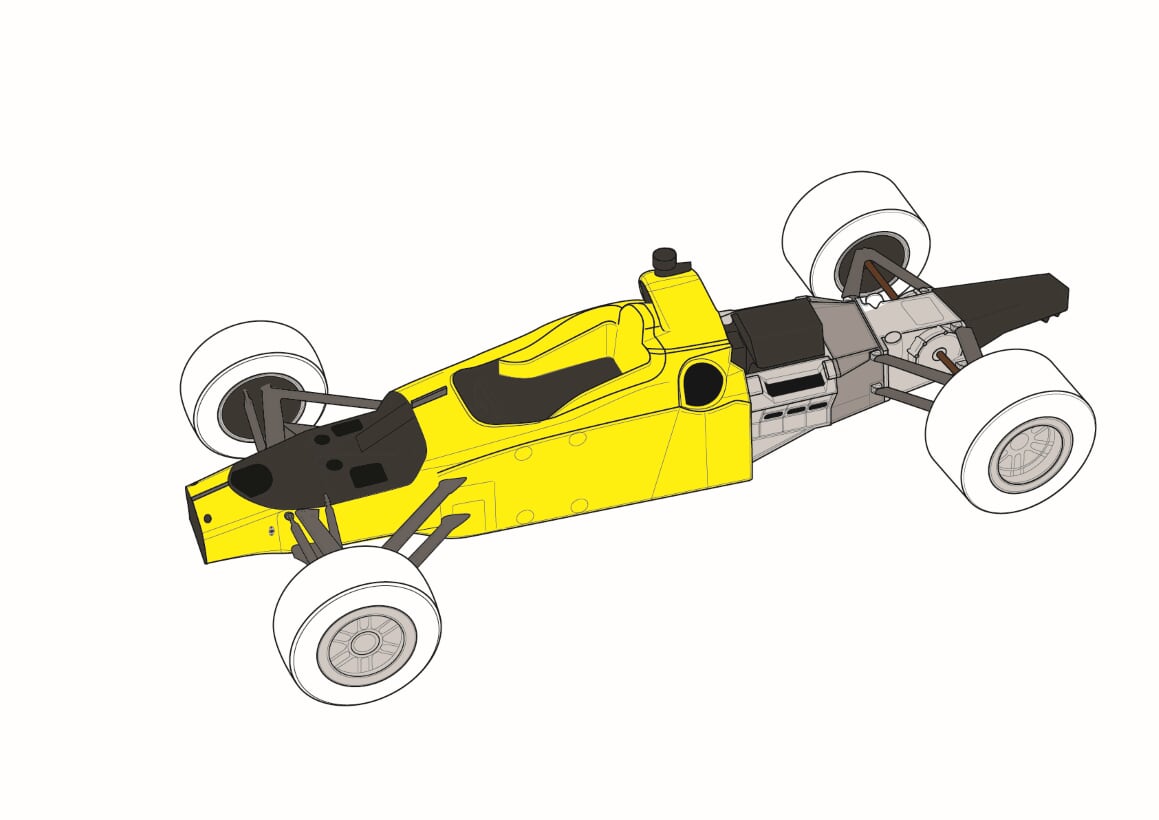
At the core of the car is the survival cell, or monocoque. As with the rest of the car, it is produced by Dallara. Made with carbon fibre and aluminium, the monocoque undergoes stringent crash tests to ensure safety. Inside the faired hoop behind the driver’s head is a steel roll hoop, bolted to the tub. Below this, the fuel tank follows typical race car design with a flexible bag tank, complete with fast-filling connectors for refuelling stops during the race.
To best aid aerodynamics, the front footwell section of the tub is slightly raised all the way back to the dashboard bulkhead. Being a spec series, the chassis isn’t raised too high in this area, giving the advantage of a low centre of gravity and a direct load path for impacts passing through the nose cone. With this moderate raised section, the front suspension bolts conventionally to the sides of the monocoque.
Aero
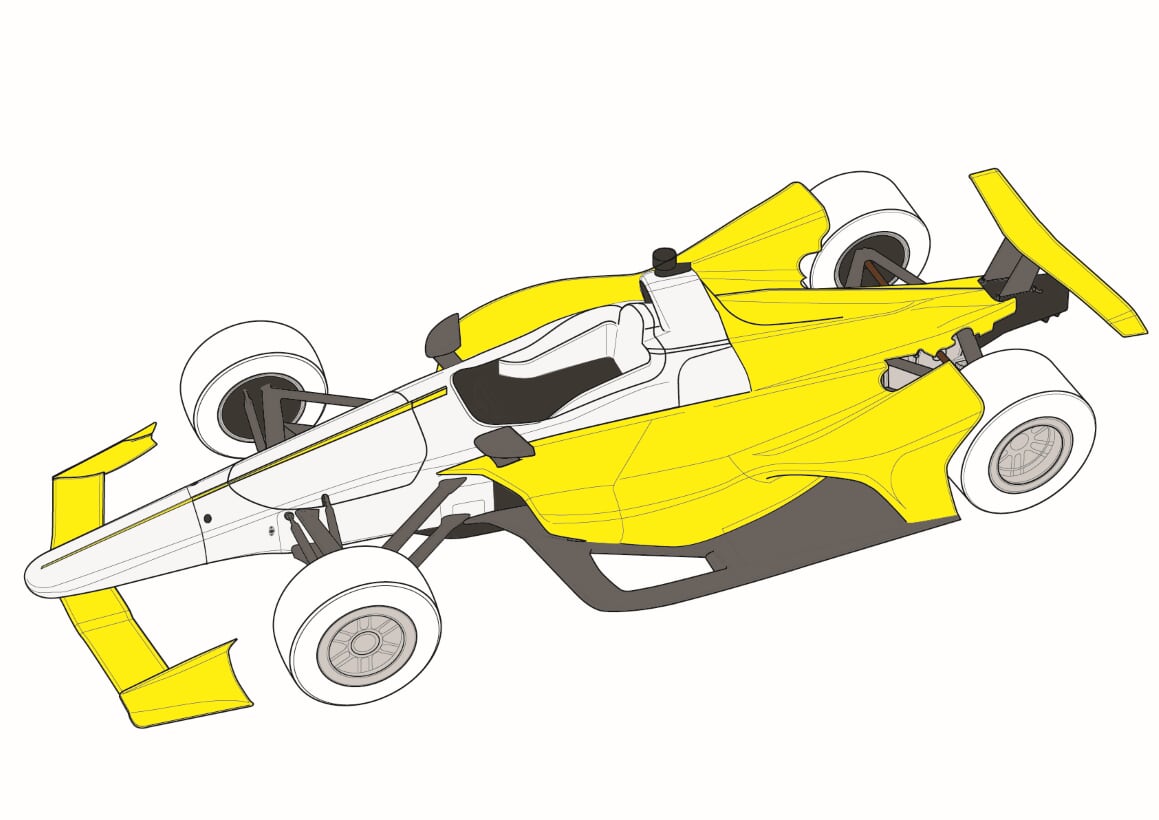
2019 saw a further change in the car’s aero package. The cars’ performance and looks were revised after a lengthy process, with IndyCar, Dallara and British stylist Chris Beatty defining how the car should look and what aero figures the bodywork should deliver. Every team needs to run the same base specification according the circuit, so no modifications or bespoke bodywork development is allowed, saving on costs, as teams do not need to run their own wind tunnel programmes.
There are three specifications the car runs in; Superspeedway, Short Oval and Road Course. Each spec is now defined by IndyCar via Dallara, the Superspeedway set up illustrated here is used at Indianapolis for the Indy500. To maximise top speed, the front and rear wings are trimmed out to near-flat wing elements. The front wing retains the same endplates, but a single aerofoil is used. In contrast, the rear wing is a specific component, with just the single aerofoil being run with no endplates. Providing most of the downforce with little drag is the shaped underfloor. This features ground effect tunnels under the car, to produce low pressure to keep the car planted at high speed.
To keep the car from spinning and to prevent flipping should it spin, there are several specific features on the car. Along the nose, there is a centreline wicker and on the engine cover is a shark fin. These both provide some yaw stability to prevent spins. They also produce drag high above the centre of gravity to help prevent flips when the car is spinning sideways at speed, this is similar to the sharkfin solution run on WEC LMP cars.
The floor is also shortened on the superspeedway spec. This produces a hole in the floor, which also prevents air building up under the car and risking a flip over incident.
Suspension
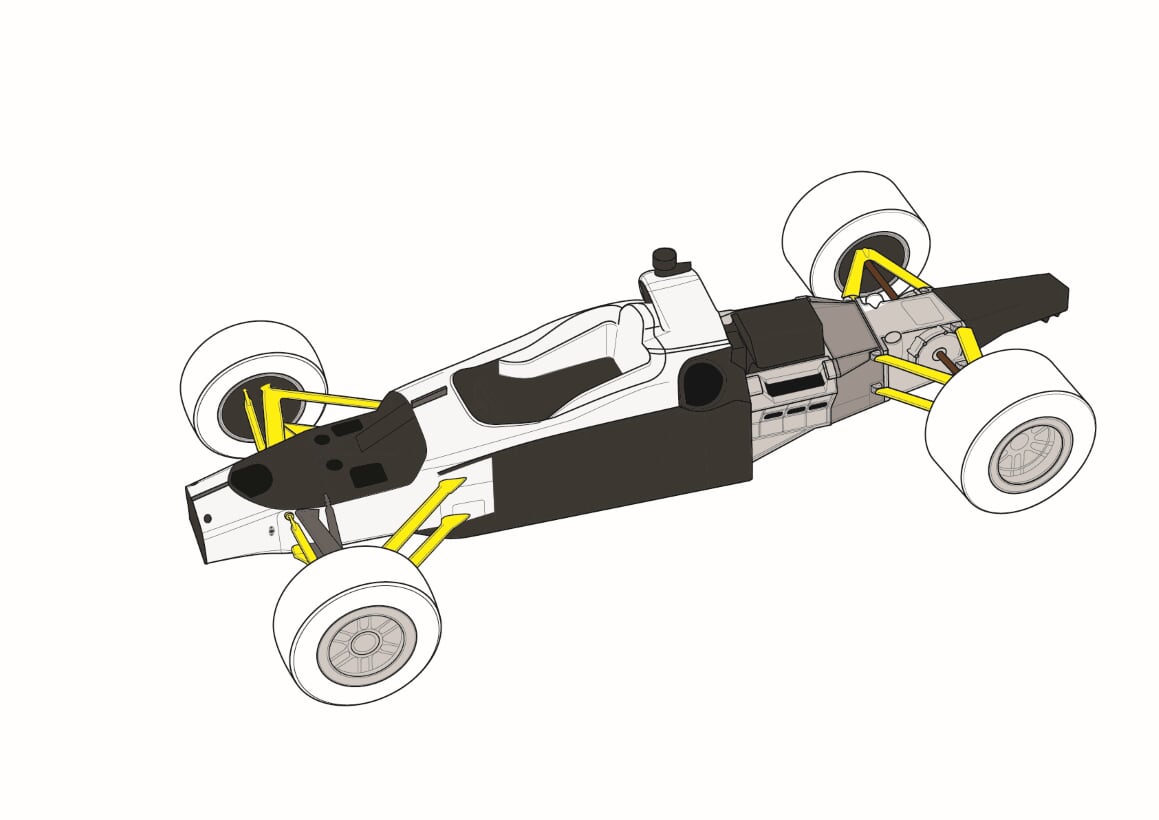
In concept, the front and rear suspension is a typical single seater set up, with double wishbones and pushrods on both ends. These are fabricated in steel to reduce costs and potential debris created with carbon fibre suspension hardware. Outboard, it is again fabricated steel uprights supporting the axles and brakes. Inboard rockers translate the movement of the pushrod to operate coilover springs and dampers, as well as an anti-roll bar and a third spring\bump rubber. Third (heave) dampers, however, are banned. On both ends of the car, the rockers and spring\dampers are mounted up high for easy access and adjustment.
Suspension set up is as critical in IndyCar as aero. Requiring fine adjustment to get the car running as fast as possible on the Superspeedway, the suspension adjustment allowed is far greater than on a typical race car.
In addition to the usual range of geometry adjustments, the dampers are a ripe area for team development. This is one of the few freedoms in IndyCar for teams to fit and develop their own parts. Thus, IndyCar tends to be the pinnacle of damper technology. Dampers cannot be linked front to rear or left to right, although inerters can be fitted if they are contained within the damper body.
Even while on the move, the driver can alter the anti-roll bar settings with a lever to their left side in the cockpit as well as adjusting the weight distribution via adjustable spring mounts, achieved via steering buttons. The driver will use these adjustments to refine the handling as the fuel load lightens and the tyres degrade.
Engines

Teams have a choice of two engines from either Chevrolet or Honda. These are both bespoke race engines and are 2.2 litre V6s with twin turbos. Depending on the boost allowed for different circuits, they produce between 550-700hp and weigh a minimum of 112.5kg. These are spec engines and cannot be developed by the teams, who can use up to four engines through a full season.
Each bank of the V6 has its own spec Borg Warner turbo where short exhausts lead to the turbine and separate wastegate. The compressor feeds straight into the plenum without an intercooler, taking filtered air from a duct within the sidepod. Sidepods also house the water and oil radiators for the engine.
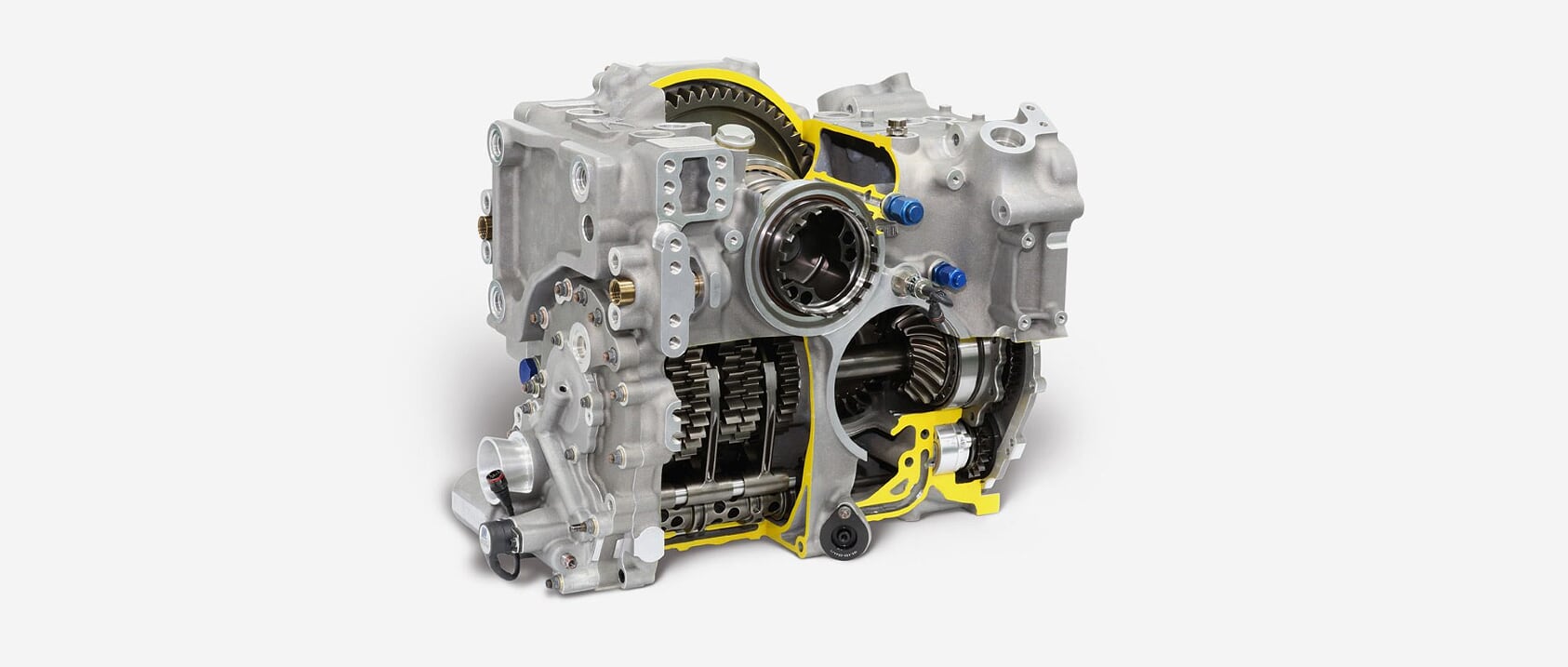
To ensure the engines are efficient they can run a direct fuel injection, with a single injector and fuel pressure of 300bar. Fuel is uniquely a mix of 85% ethanol and 15% petrol. AS mentioned above, engine output is capped by circuit type. By controlling boost pressure, Superspeedways are the lowest output with just 1300mbar allowed inside the plenum, with an extra 100mbar allowed for Indy500 qualifying. All other track formats get the maximum 1500mbar, with an extra 150mbar for push-to-pass. The engine is controlled by a spec McLaren TAG400i ECU, with an RPM limit of 12,000.
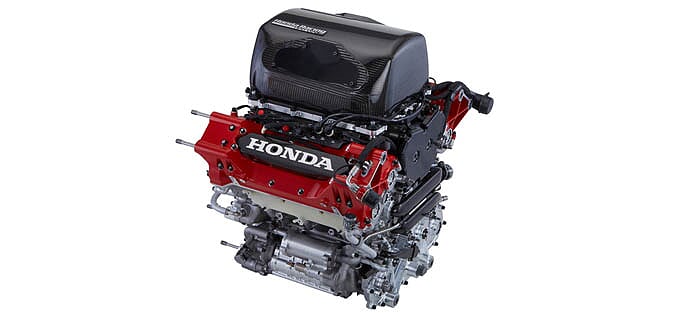
Gearbox
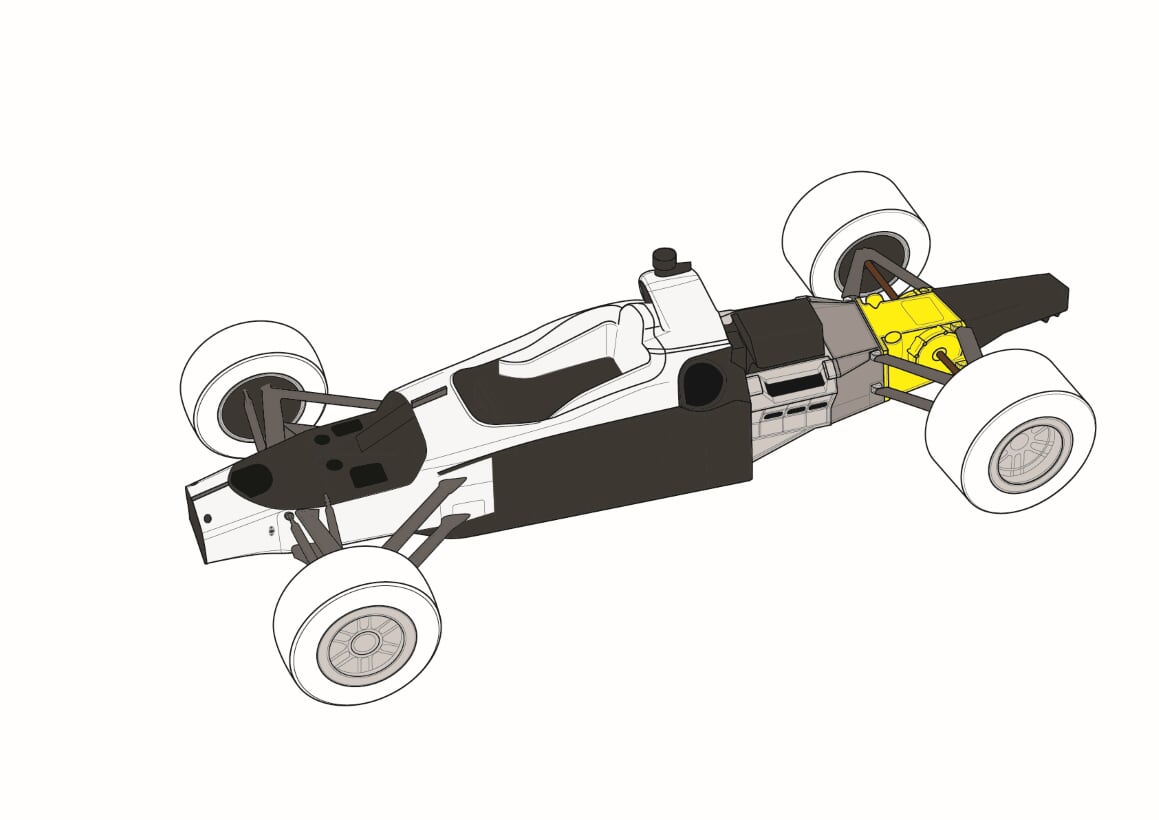
Regardless of engine supplier, all teams run the same Xtrac gearbox. This bolts to the engine with an intermediate bellhousing. The gearbox itself is a short aluminium casing, with the gear cluster ahead of the final drive. The casing incorporates the rear suspension mountings and weighs in at 70kg.
This is a six-speed paddle shift gearbox with reverse and there’s a choice of two shift and clutch control packages. Teams get to select from a fixed range of gear ratio pairs and final drive ratios from Xtrac.
There are also two differentials that can be used. For Ovals, the differential is replaced with a spool, which is a solid unit connecting the gears to both driveshafts. On road courses, there is a full differential with adjustability from the clutch stack, ramp angles, plate and preload settings.
Safety
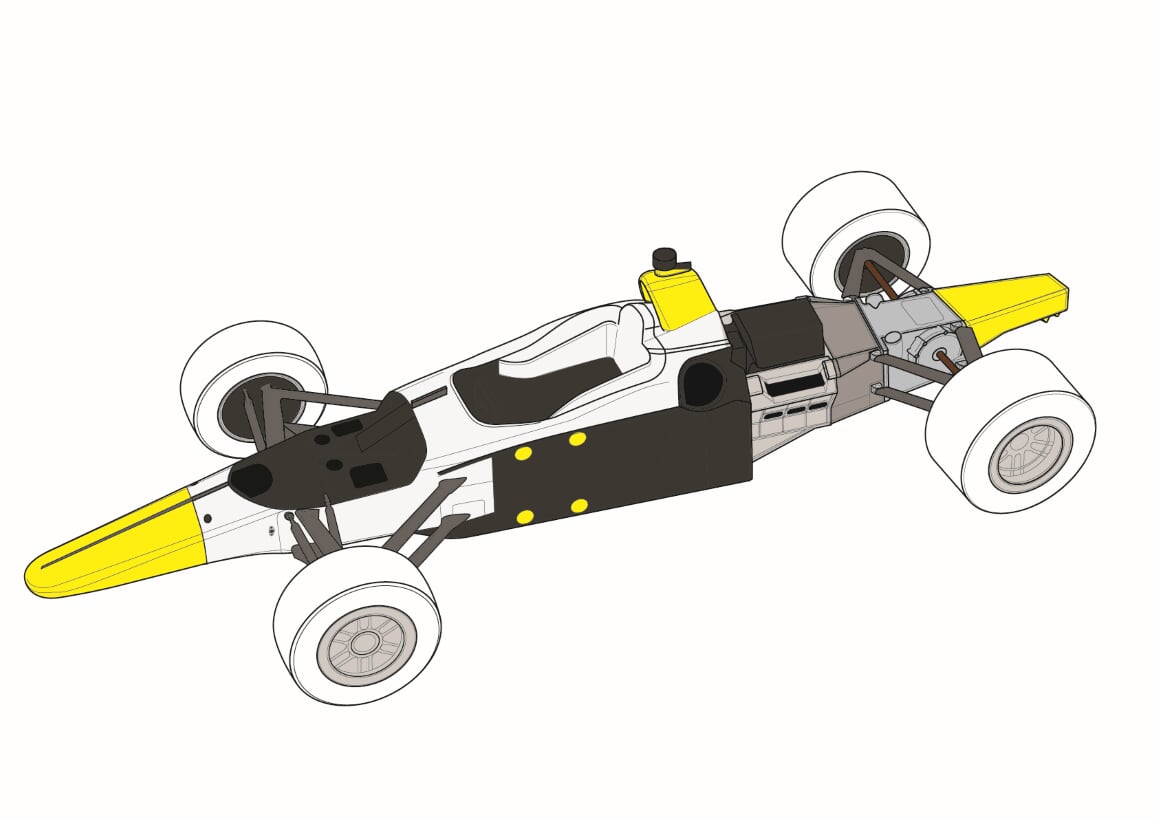
With high speeds at Superspeedways, safety has always been a priority with IndyCar and the latest car incorporates a range of ever greater growing safety features to protect the driver. Aside from the monocoque survival cell, with its anti-intrusion panels along its sides, there are also other impact protection structures including the nose cone, rear impact structure and side impact spars.
Around the driver, there is a padded headrest at the back and sides, as well padding inside the footwell area and additional under the seat. This latter inclusion was added after drivers suffered back injuries as the floor of the car hit the track during accidents.
For 2019, there has been the addition of the Advanced Frontal Protection debris deflector. This short vertical spar sits ahead of the cockpit to push away debris heading directly towards the driver. Admitted by IndyCar, that this is just ‘Phase 1’ of the cockpit protection process.
Indycar has already tested aero screens to deflect more debris and have plans in place to race this in the near future.
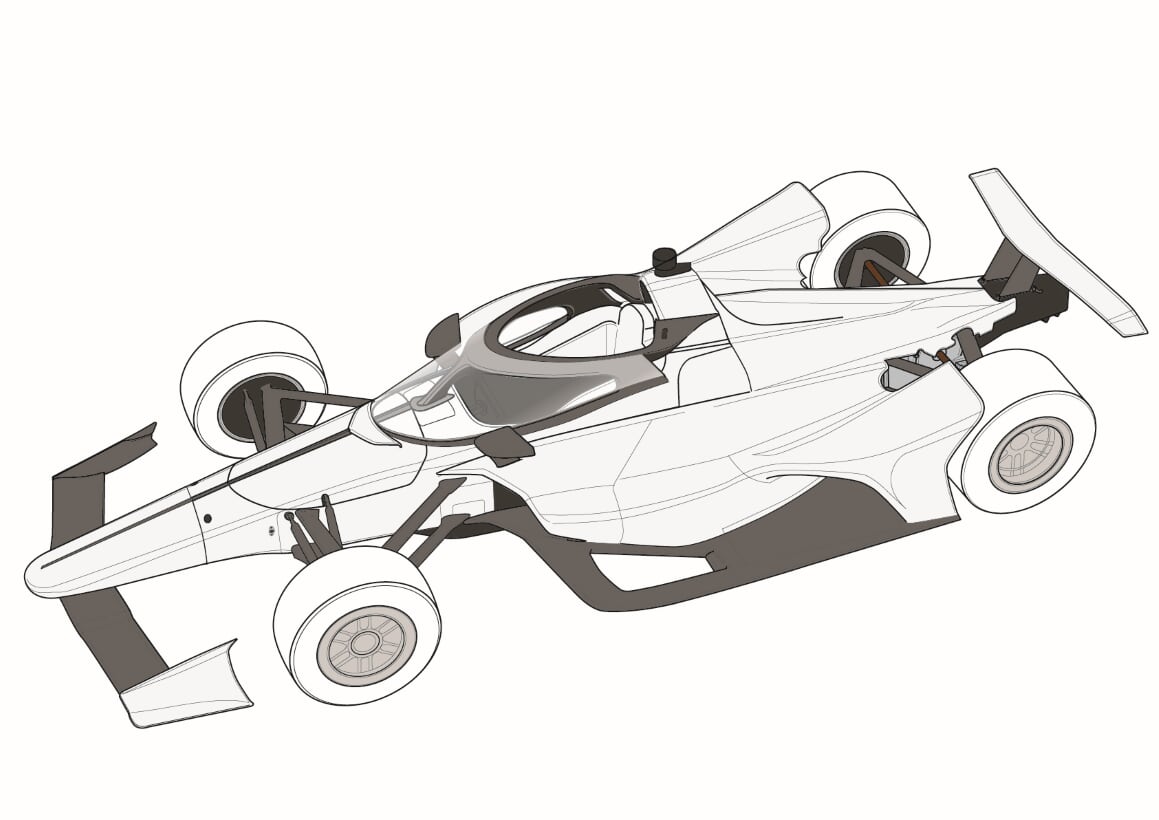

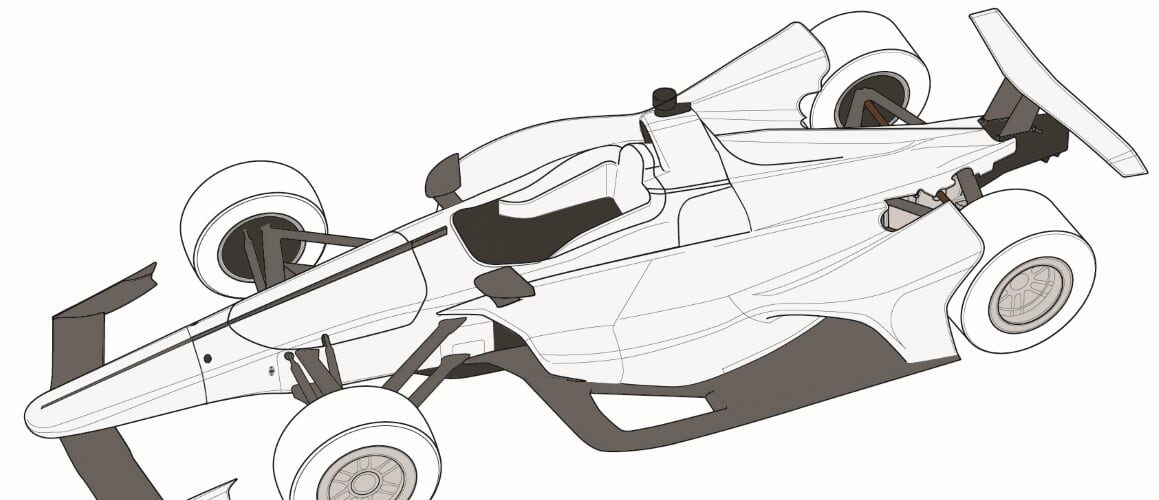


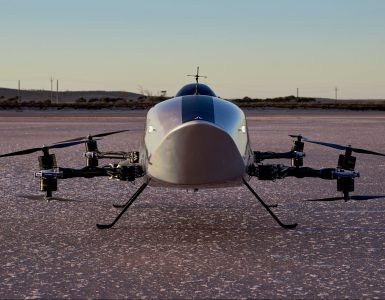
Thanks for the update I learned a lot
Great article, simple but informative. Well written. Thank you